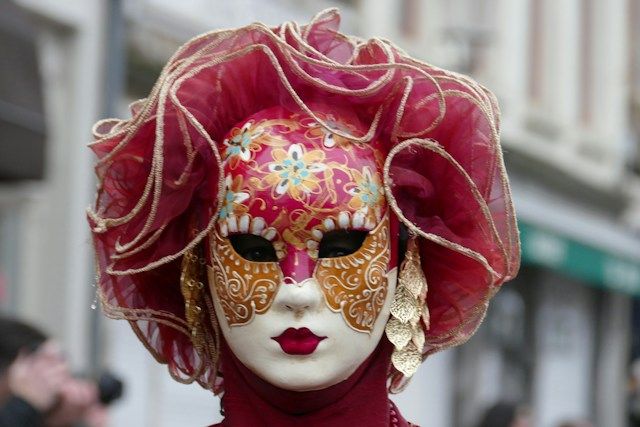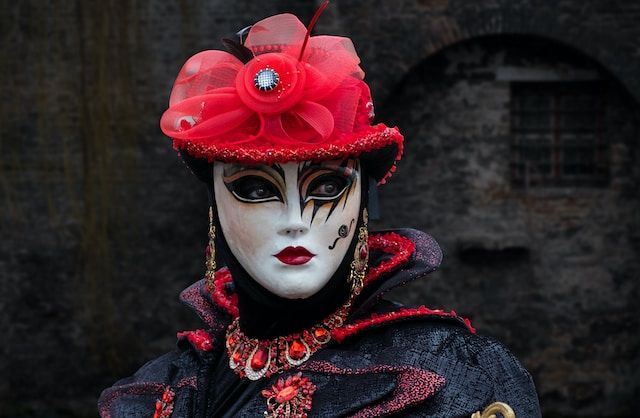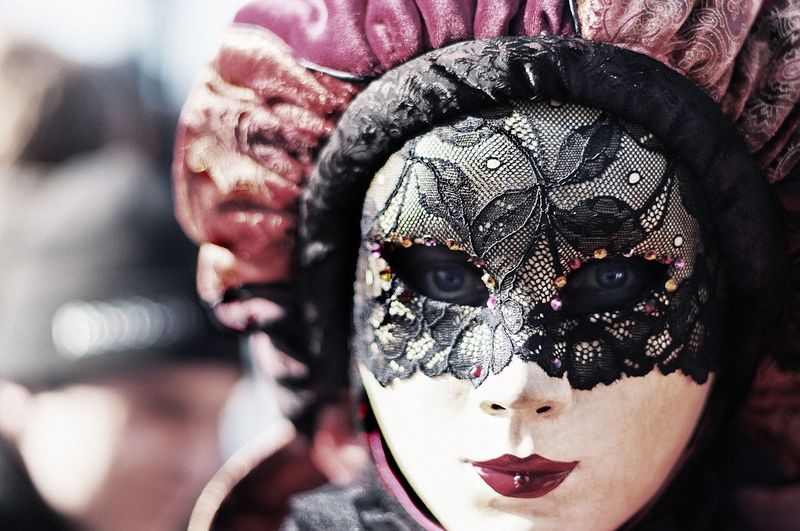The origins of the Venice Carnival date back to ancient times, with the earliest historical traces dating back to 1094. This festival, rich in symbolism and history, has gone through centuries of evolution to become what we know today.
But what are the traditions of the Venice Carnival? Let's find out all of them below.
The renaissance of Carnival

After a long period of interruption, the Venice Carnival experienced a renaissance in 1979. This rebirth represented not only the return of a festival, but also the recovery of an important part of the Venetian cultural identity.
Theater, gastronomy and masks: the living traditions

The Venice Carnival is more than just a celebration. It is a triumph of theatrical performances, culinary delights and extraordinary masks and costumes.
These elements hark back to the ancient traditions of the festival, blending the sacred and the profane into a single experience.
Venice Carnival traditions: Palaces transformed into celebration centers
One of the most fascinating aspects of the Carnival of Venice is the transformation of private palaces into actual party centers.
This harkens back to the sumptuous festivities held during the era of the Serenissima Republic of Venice, when Venetian nobility opened the doors of their palaces to welcome guests from all over the world.
Venice Carnival traditions: The return in 2024
The next chapter in the history of the Venice Carnival begins in 2024, when the festival will return to enchant the streets and the hearts of visitors starting January 27.
This event represents not only an opportunity to celebrate the traditions of the past, but also to create new memories and consolidate Venice's cultural heritage.
Venice Carnival traditions: Immersion in cultural roots
To fully understand the meaning and importance of the Venice Carnival, it is essential to immerse oneself in the cultural and historical roots that have shaped its essence.
Carnival celebrations in Venice have always represented a moment of liberation and transgression, in which rigid social rules were temporarily suspended and individuality could express itself freely behind a mask.
Rediscovery of ancient traditions
Over the centuries, the Venice Carnival has undergone many transformations, but many of its ancient traditions have survived the passage of time.
From lavish parties in aristocratic palaces to the most elaborate mask and costume contests, each element of Carnival carries with it centuries of history and cultural significance.
Carnival as artistic expression
One of the most fascinating aspects of the Venice Carnival is its artistic and creative nature. The elaborate masks and costumes are true handcrafted masterpieces, created with care and dedication by skilled Venetian artisans.
Every detail of these works of art is designed to evoke an atmosphere of mystery and fascination, transforming the lagoon city into a magical stage.
A journey through time
To participate in the Venice Carnival is to immerse oneself in a journey through time, where past and present merge into one unforgettable experience.
The city's streets come alive with colors, sounds and scents as visitors from all over the world join in the festivities, helping to make the Venice Carnival one of the most iconic and beloved events in the world.
Conclusions
The Venice Carnival is much more than just a celebration. It is a unique experience that celebrates the history, culture and art of a city steeped in charm and mystery.
In 2024, the world will once again have the opportunity to immerse itself in the enchanted atmosphere of the Venice Carnival, creating new memories and preserving the legacy of one of the world's most fascinating traditions.

